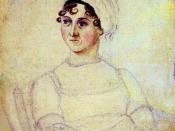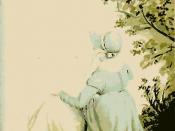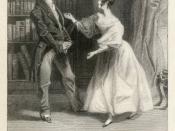Throughout "Pride and Prejudice", Jane Austin adopts a number of literary devices to convey the personalities of her characters as well as to introduce to the reader themes central to the novels development. Our understanding of the events and characters is enhanced by the combination of "showing" (dialogue) and telling (narrative) which includes techniques such as focalization and free and direct speech.
The passage opens with a paragraph from the omniscient narrator confiding or "telling" us about how Jane Bennett feels in regard to Mr. Bingley's upcoming visit to Netherfield. The narrator explains how Jane is so distressed by the news that she cannot hear word of it "without changing colour"
The following paragraph "shows" the reader through the use of direct speech that Jane does not wish to see much of Mr. Bingley during his visit and that despite how it may "look" she feels neither "pleasure or pain" upon hearing the news.
Jane contradicts what we have already learnt from the narrator, she explains that although she may appear "distressed" she is not and her only concern is with how others may look at her. However there are signs of obvious distress in Jane's speech, her choice of the words "appeared" to be and that she was only "confused for a moment" indicate she is troubled and may be in denial of her true feelings.
The previous narrated paragraph "telling" us of Jane's feelings allows the readers to see beyond Jane's direct speech and "shows" us that she is repressing her true feelings and does in fact still have strong feelings for Mr. Bingley. In addition to this we the reader have additional knowledge regarding the situation and these two paragraphs offer hope that the two characters will soon be reunited
The passage moves from "showing"...


